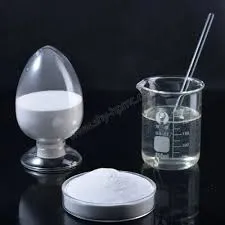
Dec . 11, 2024 09:35 Back to list
Investigating the Influence of HPMC Viscosity on Solution Characteristics and Applications
Understanding HPMC Viscosity A Key to Enhanced Performance in Formulations
Hydroxypropyl methylcellulose (HPMC) is a versatile polymer widely used in various industries, including pharmaceuticals, food, cosmetics, and construction. One of the critical properties of HPMC that significantly influences its application is viscosity. Understanding HPMC viscosity is essential for formulators to achieve desired product performance.
What is HPMC?
HPMC is a semi-synthetic derivative of cellulose, characterized by its etherification of the hydroxyl groups in the cellulose molecule. The modification increases its solubility in water and imparts unique properties that make HPMC a valuable ingredient in many formulations. Its applications are vast, ranging from thickening agents in food products to binding agents in tablets.
Importance of Viscosity
Viscosity, a measure of a fluid's resistance to flow, plays a pivotal role in the functionality of HPMC in various applications. The viscosity of HPMC solutions can be influenced by several factors, including concentration, temperature, and the degree of substitution of hydroxypropyl and methoxy groups. For formulators, understanding how to manipulate these variables is crucial for optimizing product performance.
1. Concentration As the concentration of HPMC in a solution increases, so does the viscosity. This relationship is significant in applications such as construction, where high viscosity enhances the spreadability and adhesion of mortars and adhesives. For pharmaceutical applications, varying the concentration allows for the control of drug release rates in sustained-release formulations.
2. Temperature Temperature affects the viscosity of HPMC solutions, with higher temperatures generally leading to lower viscosities. This temperature sensitivity can be advantageous during processing, allowing for easier mixing and application. However, formulators must also consider how temperature changes during storage and use might impact viscosity and, thus, the overall performance of the product.
hpmc viscosity

3. Degree of Substitution The degree of substitution (DS) refers to the extent to which the hydroxyl groups of cellulose have been replaced by hydroxypropyl and methoxy groups. A higher DS generally results in lower viscosity, providing formulators with a tool to fine-tune the viscosity of their formulations. For example, in food applications, different DS levels can modify the mouthfeel of sauces and dressings without compromising texture.
Applications Based on Viscosity
1. Pharmaceuticals In the pharmaceutical industry, HPMC’s viscosity is crucial in formulating tablets and capsules. High-viscosity HPMC is often used for controlled-release applications, allowing for a steady release of active ingredients in the body over time.
2. Cosmetics In cosmetics, HPMC is utilized as a thickener and stabilizer. The viscosity of HPMC solutions can help create the desired texture in creams and lotions, affecting the product's aesthetic appeal and application performance.
3. Food Industry HPMC is commonly used as a food additive for its thickening and emulsifying properties. The control of viscosity is essential in achieving the right consistency and mouthfeel in products such as sauces, dressings, and ice creams.
4. Construction In the construction industry, HPMC enhances the workability and performance of cement-based materials. The viscosity of HPMC can lead to improved adhesion and water retention in mortars and plasters, thereby increasing their durability and performance.
Conclusion
In summary, the viscosity of HPMC is a critical parameter that affects its performance across various industries. By understanding and controlling viscosity through concentration, temperature, and degree of substitution, formulators can optimize HPMC to meet specific requirements, enhancing the functionality and effectiveness of their products. As industries continue to evolve, the importance of HPMC viscosity will undoubtedly remain a key focus for innovation and development.
-
Versatile Hpmc Uses in Different Industries
NewsJun.19,2025
-
Redispersible Powder's Role in Enhancing Durability of Construction Products
NewsJun.19,2025
-
Hydroxyethyl Cellulose Applications Driving Green Industrial Processes
NewsJun.19,2025
-
Exploring Different Redispersible Polymer Powder
NewsJun.19,2025
-
Choosing the Right Mortar Bonding Agent
NewsJun.19,2025
-
Applications and Significance of China Hpmc in Modern Industries
NewsJun.19,2025







